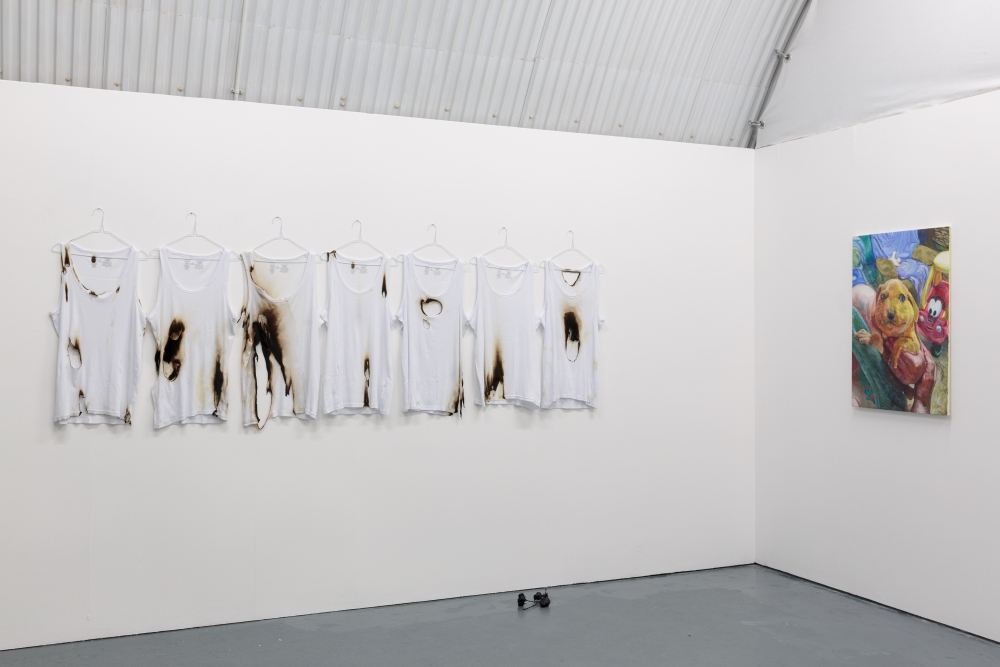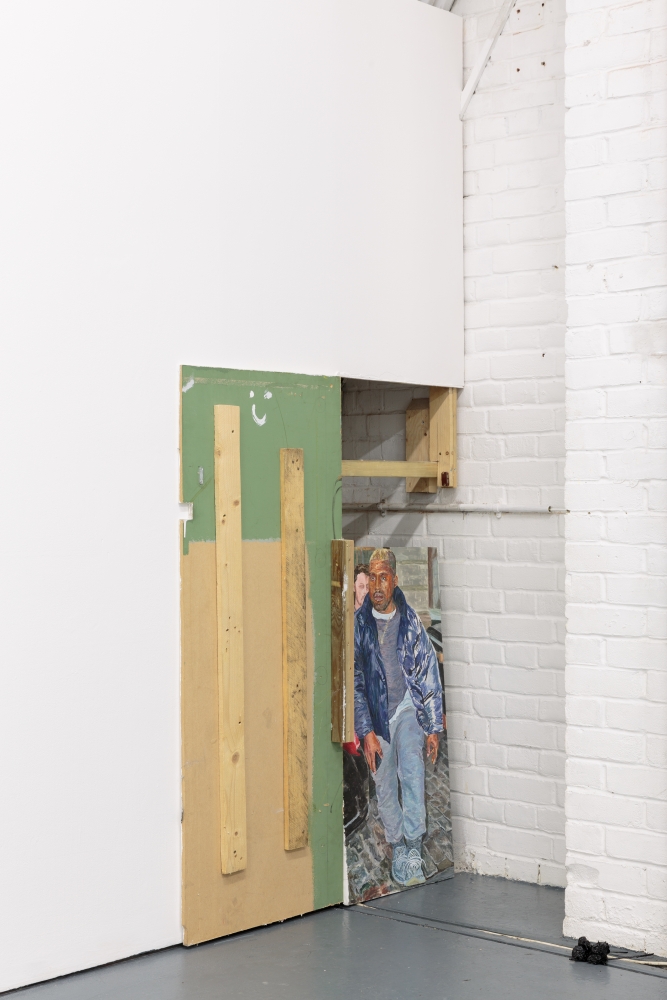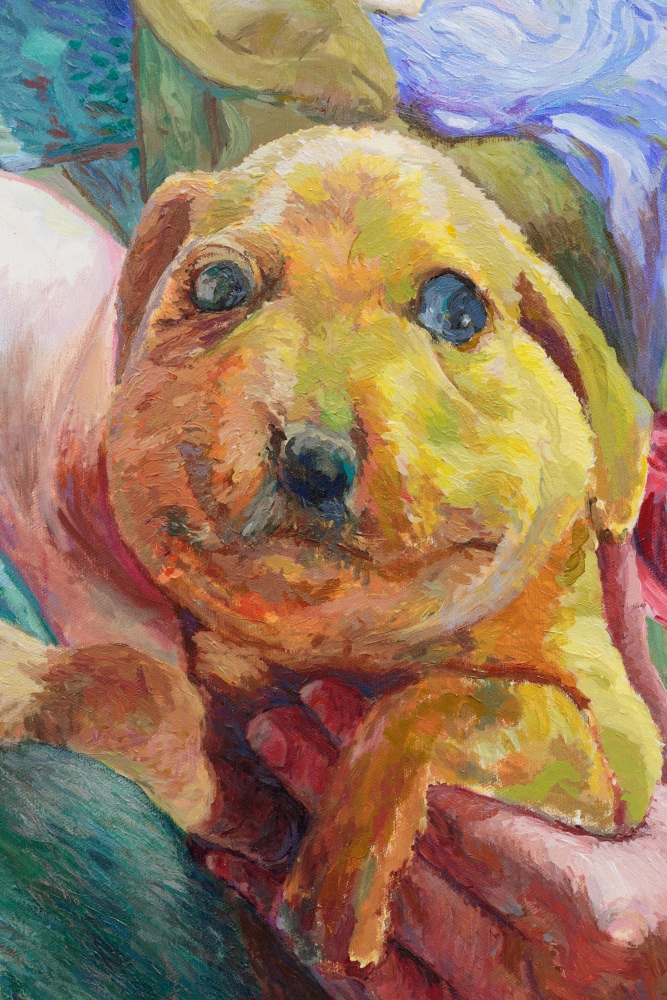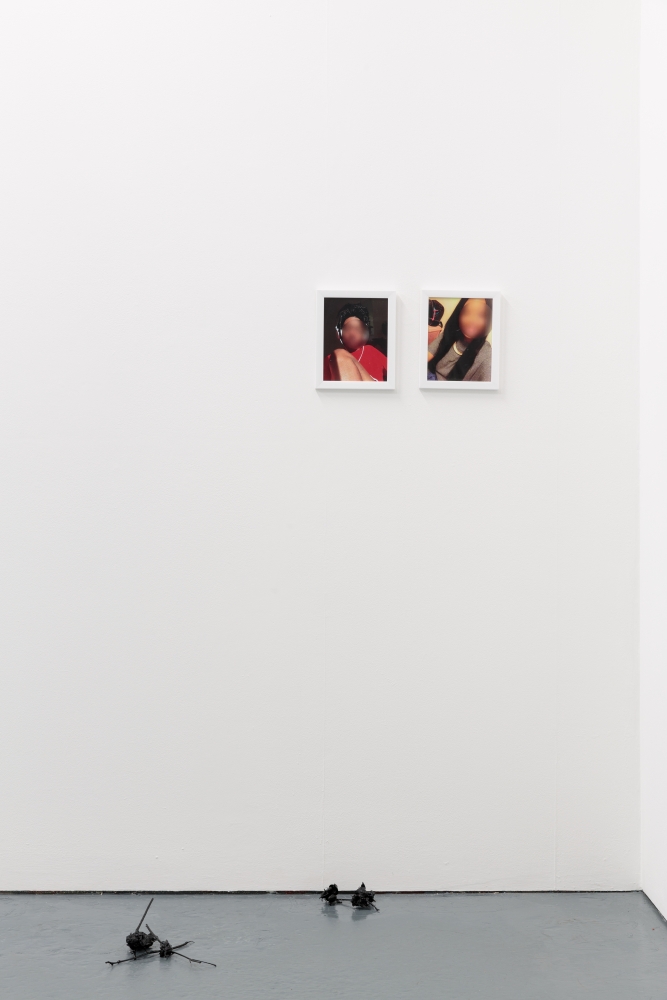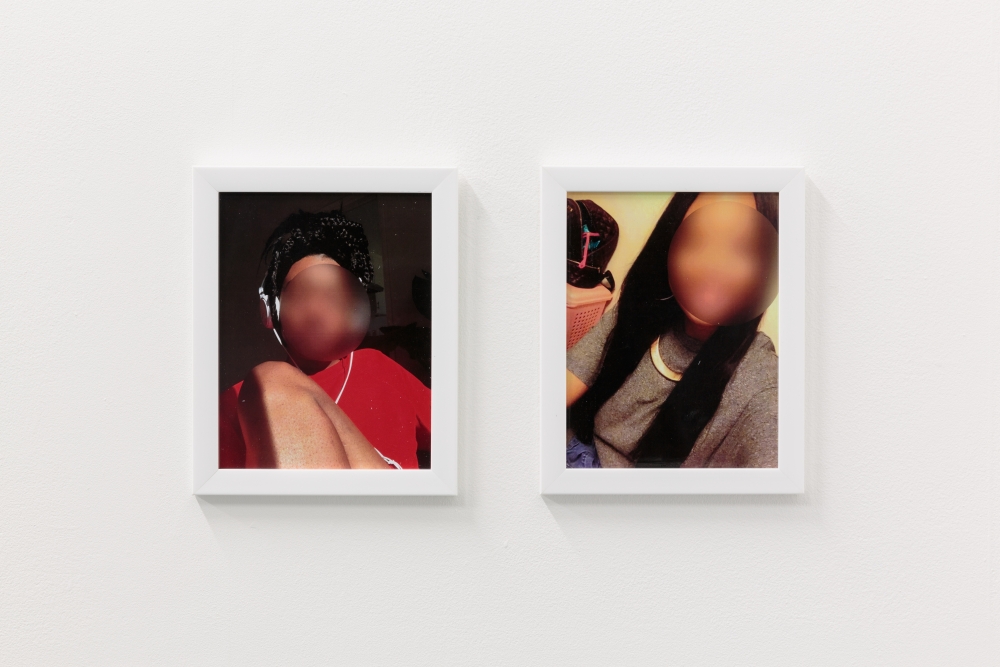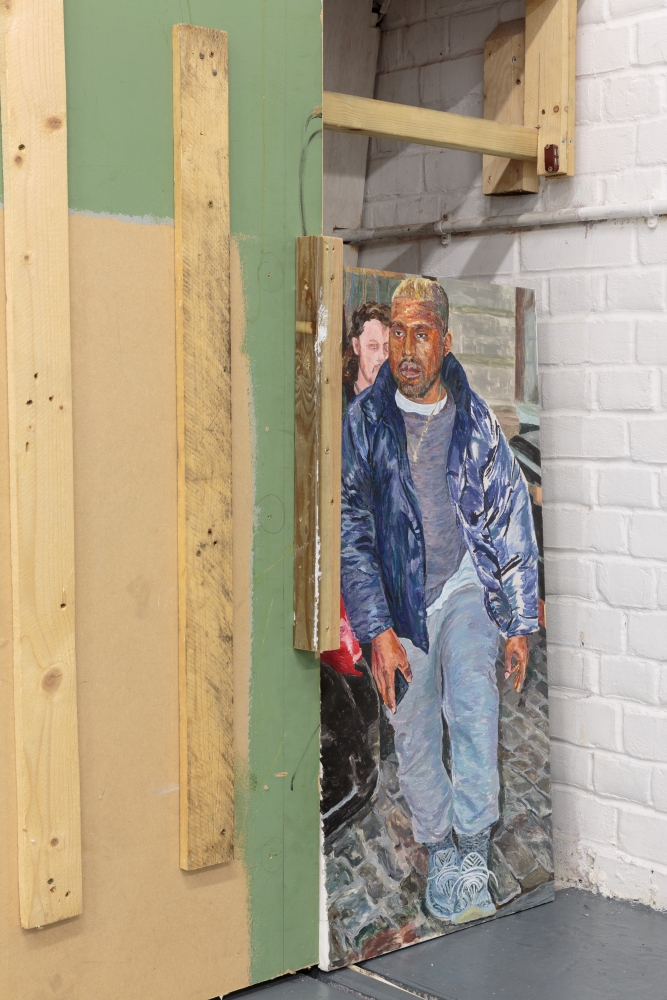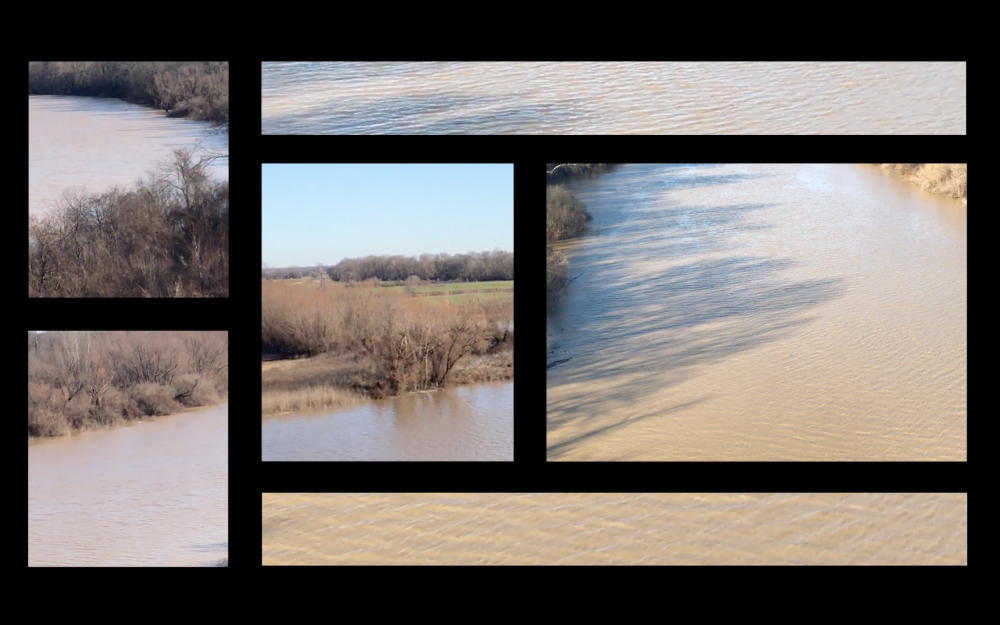“…his brother was forced to leave as well, but he escaped by hiding in a coffin,” Aria Dean is talking about the circumstances under which her great uncle fled Yazoo City, Mississippi. Her grandfather was run out of town as well. The anecdote is prompted by a question about what motivated the Los Angeles-based artist and writer to make ‘Wata (Yazoo, MS),’ a video included in White ppl think I’m radical, a joint exhibition with Melbourne-based artist Hamishi Farah — whom we await on a Google Doc form.
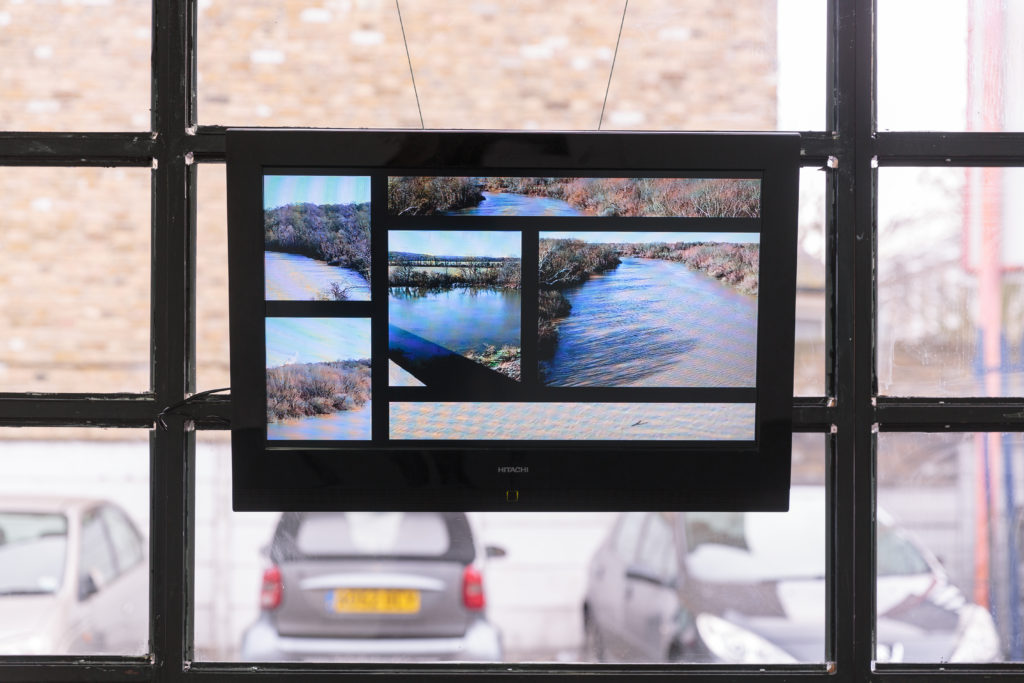
The two recently met in London to put on the show, running at Arcadia Missa February 17 to April 29, with a press release that opens: “The exhibition is the friendship the friendship is the exhibition.” Named after a lyric by rapper Quavo in Kanye West’s ‘Champions (Round & Round),’ White ppl think I’m radical is an ode to community, support, and connectivity, with work that springs from months of online conversation between Farah and Dean. They have been internet friends for some time and are active members of an unofficial, small online community of black artists, the global african diaspora who’ve found a space to operate and connect on the internet.
“We don’t really have art niggas in Australia,” writes Farah, “I guess that makes me thirsty as fuck to connect and bounce positions and thoughts on art and the black diaspora.” The three of us live-rant on the Google Doc form. We differentiate our voices using different font and color choices. I opt for black bold arial font, Dean writes in the same, but bright red and not bold, Farah writes in an orangey-brown Cambria, highlighted in grey. We are each in different time zones: Pacific, Eastern, and Australian Eastern Daylight Time so chat on the form offers us more flexibility than Gchat or Skype. Conversations bounce around non-linearly, each of our cursors interjecting on any sentence being typed at any given time.
The energy is positive and fast. Communication is natural and the two seem to complement each other’s thoughtfulness well. Both articulate the complexities of blackness under white supremacy with a stress on community as a form of resistance and portraiture. Their highly attuned conceptual rigor not only yields exceptional work but also functions as a platform for survival, giving Dean and Farah the awareness needed to be four steps ahead of any potential backlash. Art becomes a very specific tool used to evince a shared experience, a network, a reclamation of image and trauma.
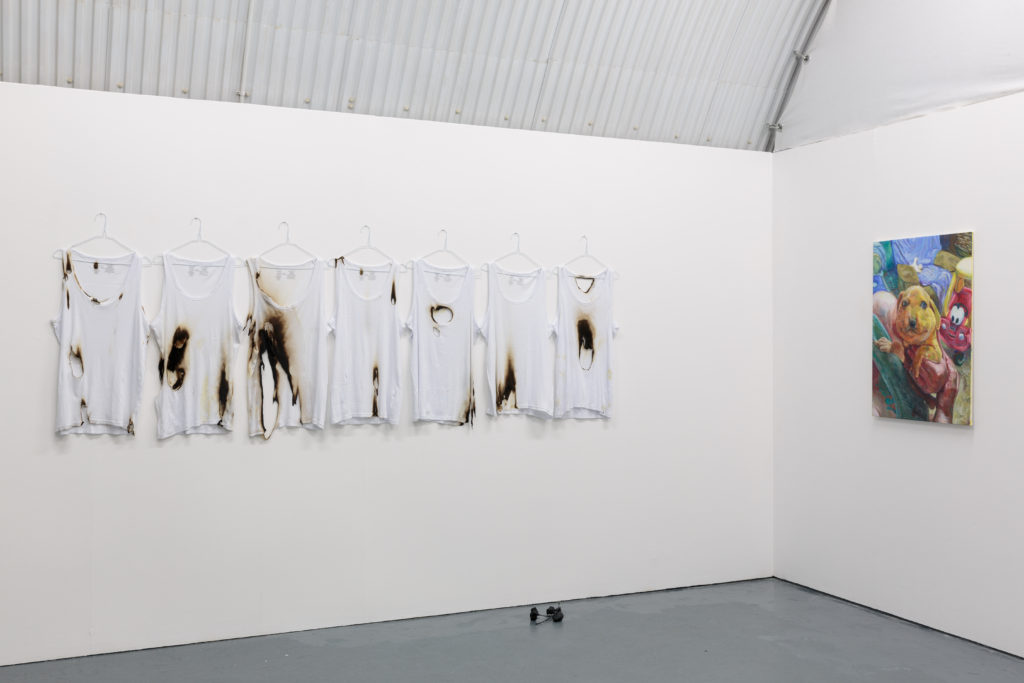
The work in White ppl think I’m radical is secondary to the the experience of Dean and Farah’s friendship. This isn’t to say it can’t stand on its own. It can and it does, proposing a whole new way of looking at black portayal. Dean worked with Aallyah Wright — whom she met on Facebook and lives in the same region from which her grandfather was expelled, and credits as her collaborator on both the video piece and the photographs included in the show. Dean says, “I used Aallyah as a proxy for myself, she is my age and is also black. I tried to render us like equal partners in producing the work, or at least blur the distinction between our ‘selves’, referencing the problem of black ontology and subjectivity.”
Along with this, Dean and Farah’s attention to camaraderie is indicative of their atypical priorities when putting on a group or two-person show. They emphasize the importance of ‘holding space’ for one another, rather than taking it for themselves as individual artists. This gesture activates their conceptual framework as it becomes a lived experience that is then reflected by the work: the importance of community, Quavo, and the power of an inside joke.
** What was it like meeting and working together in person? What was your relationship like before you met?
AD: Yes, it was our first time meeting. Before meeting in London, Hamishi and I were friends on Facebook and such; like part of what some people (maybe Winslow Laroche coined the term?) called ‘black net fam’ or something, ha ha. So I think we were in this network and also had other mutual friends offline and stuff. But once Hamishi asked me to do the show with him, we started Facebook chatting a lot under the auspices, haha, of planning the show out but mostly just chatted and gossiped and sent links to new songs we were listening to.
I think at some point it took on this diaristic format because of the time difference. I found that really interesting. And we also talked about art! Ha ha, I think of ‘the exhibition is the friendship’ in the sense that we thought alongside each other for a few months, despite the distance. And, at least from my end, the stuff shown at Arcadia Missa was the result of everything that happened in that period — including but not limited to our correspondence.

HF: The internet is cool but there is a cap on how much you can do, I think a lot of the frustration, gaslighting, and difficulties around being a black artist has such physical repercussions. So it’s really nice and crucial to be in the same space as one another, being able to make sure you can take care of one another and talk shit in person with fewer distractions. I think the white peripheries online (while you’re in chat and your stream’s still going) sometimes makes chatting a much less private space than a restaurant or something.
I think regarding Winslow’s ‘nigga net fam,’ the first thing is to use whatever resources we can get a hold of to link up, then stuff can come after that. You know like you don’t want to project your idea of ‘the answer’ or ‘the way forward’ but just work on putting each other in the circumstance to come up with it together. I feel really lucky to be offered those resources and so lucky for Aria being down with it. I think hanging out with her in London and making the show together had such a huge impact on the outcomes and how easy it all was. I think in ‘the exhibition is the friendship,’ prioritising being together, made making work and showing it so simple and takes a lot of weight off. You know, like art is a tool to enable stuff like this, rather than us working our asses off anxiously to uphold the sanctity of some idea of art. Because of this I couldn’t really imagine it being more successful.
** Was this your first time in London? Also what was your experience like in the city, together, and also navigating white spaces, such as the gallery for example?
AD: In terms of white spaces — it’s unfortunately par for the course, I suppose. Like Hamishi is in Australia — sooo white, ha ha — and I’m in LA usually, but went to liberal arts school and I work in the art world. So, for me at least, I’d say it was no whiter a space than anything else. But I think the fact that we were there together was really great, in that maybe the space wasn’t that white on this occasion?
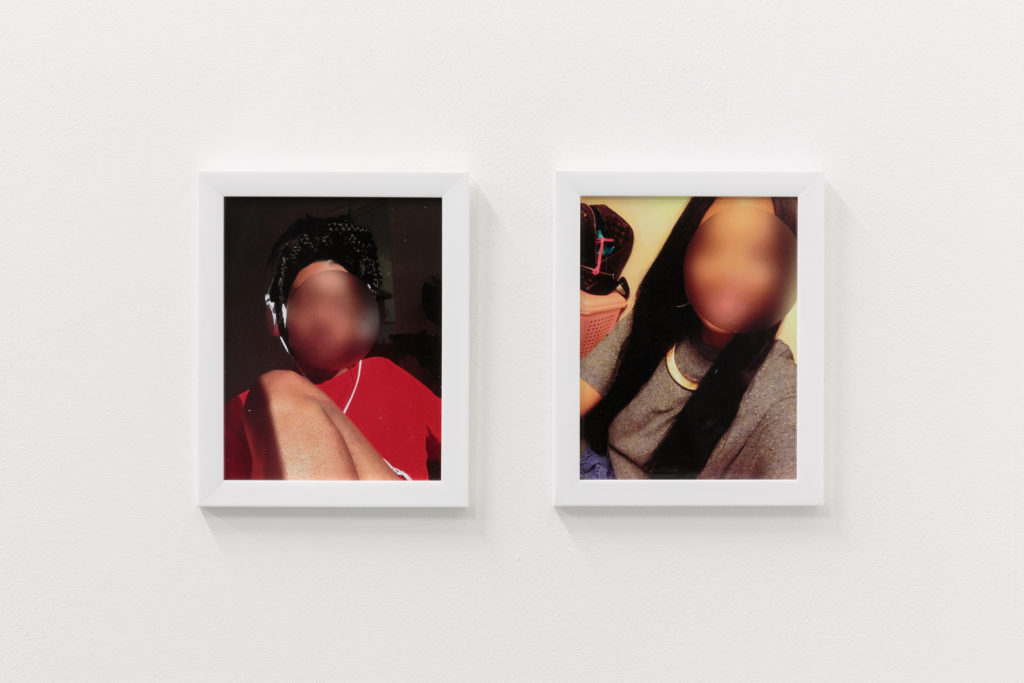
I think, in planning the show, we were really interested in the possibilities of doing it in a gallery space, where we’re really speaking to each other more than to the audience. I don’t know if we stuck to those efforts, but I think thinking about each other — at least for me — was sort of freeing. Of course, the white art-world gaze still exists, but I like to think that it’s getting the cold shoulder, at least a bit and not through any grand statement, just a sort of mundane lack of concern. This is my hope at least!
HF: I really consider my nigga net fam family. Maybe this is patriarchal but I felt so ready to run up on anybody who threatened that. I feel really grateful to be in the position to even have that feeling. In a very real way because it was in person. I mean, I consider [Aria] and [the others’] future, also my own future. I don’t have much real family so this is something very tangible to protect and try to help flourish. Even if it is a patriarchal thing, it is nice to find something in masculinity that I can feel proud of. You know, like exactly what Aria was saying: these people’s futures are one of the only reasons I put up with the bullshit and work to try to thrive. On top of the trauma I’ve experienced here, being in Australia is so difficult because I’m so far away from them.
In the same sense I have black family in Australia, whether they be from African diaspora or my Aboriginal family here. A big thing going to London and the UK for the first time was a feeling that I needed to convey my anger, disappointment, and frustrations with the colonial histories. I was going to say something at the opening, but I got the chance to make a longer and more eloquent statement during a lecture I gave at Goldsmiths (which is viewable on my Facebook). I feel like if I didn’t say something, or at least burn a flag, I would be letting a lot of people and myself down.
AD: I wish the word ‘squad’ weren’t so overused by annoying whites these days because I would be like ‘DO IT FOR THE SQUAAAAAD.’ Because that is how I feel. I agree about the future thing. It’s the ontology of the squad, ha ha.
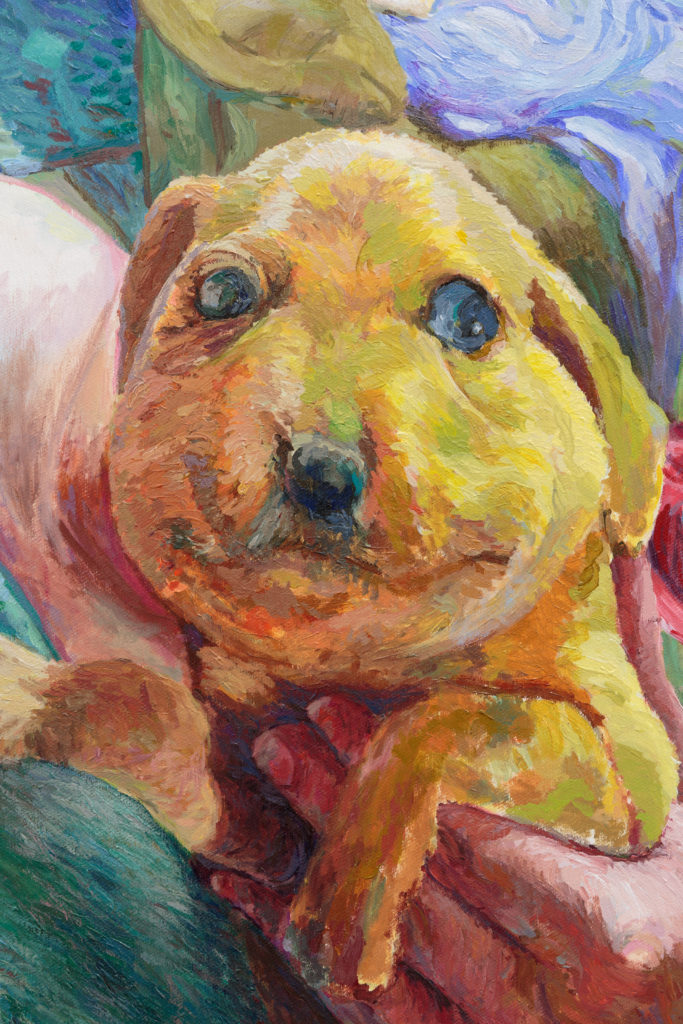
** Earlier you mentioned your correspondence leading up to the exhibition. Aria said you would exchange songs, what’s the first song that pops into your head that was shared with you?
AD: Oh, that is so hard, ha ha. I have a terrible memory. There are songs, I don’t know if they were in our chats or songs we were listening to in London.
I think of ‘T-shirt’ by Migos when I think of Hamishi. Maybe just because one time he made a Facebook status that was like ‘mama told me not to sell work’ and I really don’t know if that is the actual lyric of the song but it’s how I sing it now?
Also, maybe this is a good time to make sure everyone reading this interview knows that the exhibition title is a Quavo lyric. Everyone should also know the lines that succeed it:
‘They tried to turn me to an animal
But white people think I’m radical
Supermodels think I’m handsome
You might think I’m too aggressive
But really I think I’m too passive
‘Til I pull out the chopper, start blastin”
It’s just a sort of inside joke about, like, the wide-eyed, drop jaw, white audience, ha ha. I love the complexity of the line though, ha ha, like the aggressive/passive thing. It’s great. I could write a whole essay on that, ha ha.
** I feel really excited about what will come. I love seeing these communities form and what results from the conversations and the intimacy offered online. I think the distance also adds ease to the communication.
HF: Yes, I’m excited too. I think something worth mentioning is that there is a tragedy in the visibility of seeing these communities form. Like, I wish it were possible for you not to see it, of course the circumstances are what they are, but you know what I’m getting at, right? Maybe I’m commiserating the fact that there aren’t resources for these communities to operate and form outside of the gaze, there is no closed loop. Maybe the goal is a type of secession, and these exhibitions, lectures, or essays operate in some way as a call-to-arms for that secession.
** I don’t see what happens within the community, I just see what results publicly. But I understand what you mean. In showing yourself you give yourself away to the oppressor. However, I think otherwise there will never be a chance. The transition is and will continue to be traumatic and people will continue to be exploited. I think it’s important to mediate between the privacy within the community and what is shown publicly. I think I’m referring to the care and dexterity that is required of the black artist.
AD: Regarding the community thing — yeah, I don’t know, it’s all confusing… like visibility is ultimately so tricky and I don’t know how to feel about. I’m tempted to problematize even the visibility of us doing a show and talk about it ‘blah, blah’ but then it also feels good and important, so I really don’t know where that leaves it. Meh, ha ha.

HF: It’s really confusing and you can problematize us doing this, I just think it is a few steps ahead of ourselves or something. I think the goal for me is for black artists — or whatever they want to call themselves in the future — to be able to comfortably problematize everything we are doing, or are about to do. I think, in a way, proving our individual efforts as a failure would be the real success. The only posterity I’m interested in is this, of course there’s ego and stuff but like whatever. We live in this moment and everyone plays their role. If we are seen as fucked up and problematic in the future, then it means a wider black consciousness is in a better position to thrive.
AD: I think that is a good goal — like having the space to work all of this out and not worry about the detriment.
** Any shout outs?
AD/HF: SHOUT OUT TO THE FAM ON AND OFFLINE THE INSPIRATION THE VERY HEART OF IT ALL
Winslow LaRoche, Hannah Black, Brandon Drew Holmes, Phoebe Collings-James, Jasmine Nyende, Hanna Girma, Makayla Bailey, Ashley Lee, Christine Jackson, Emmanuel Olunkwa, Kyle Roach, Erin Christovale, Martine Syms, Anwar Batte, manuel arturo abreu, Devin Kenny, E. Jane, Chukwuuma, RaFia Santana, Kameelah Janan Rasheed, Megan Cope, Cheyenne Julien, Ashley Doggett, Zac Segbedzi, Elizabeth Mputu, Brandon Simmons, Brandon Covington, Divide & Dissolve, Dispossessed, Juliana Huxtable, Kenya Johnson, Soraya Lutangu, Rin Johnson, Precious Okyomon, Still Nomads, Pastiche Lumumba, John Mutambu.
AD: Ugh, I’m already stalling out, ha ha, maybe this is bad, Hamishi. We are going to leave people out and then everyone will be sad.
HF: It’s okay, we’re not perfect we’ll fix it next time.**
